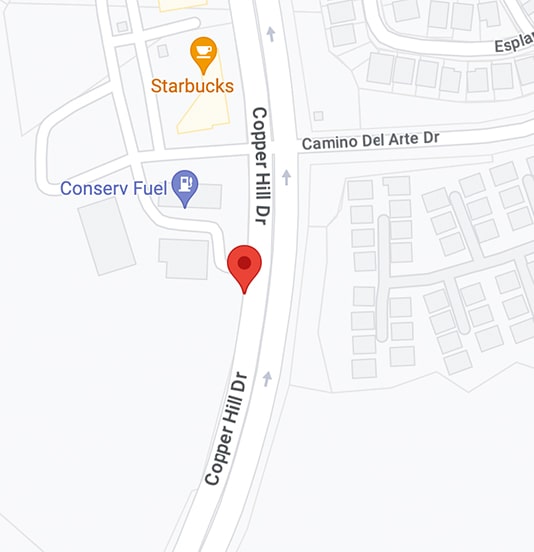Sometimes, oral problems become so severe that no non-surgical or surgical treatment can reverse them. Under these circumstances, where your general dentist has tried all treatments without success, tooth extraction, also called exodontia, becomes the last resort for immediate relief and to protect the remaining teeth. The procedure is simple and involves pulling out the tooth. Therefore, if you have a tooth problem causing you irritation and severe pain and need immediate relief, you should speak to Valencia Advanced Dentistry at Copperhill Smiles for a tooth extraction procedure in the County of Santa Clarita.
Reasons for Performing Exodontia
Tooth removal is usually the last option after all treatments have failed or when it is the only procedure to provide immediate relief. Your dentist will typically suggest an exodontia if the damage or trauma to the teeth is extremely severe. You could have a tooth that is severely cracked or broken due to trauma to the mouth, or one that has an abscess or is severely decayed because of advanced periodontal disease. With gum disease, you must extract the decayed tooth if it cannot be repaired to prevent the infection from spreading to other teeth. With cracked or broken teeth, exodontia is the last option for immediate relief.
Exodontia is also necessary to remove wisdom teeth when you cannot keep them clean, or there is limited space in the gums for them to pop out. In special cases, wisdom teeth can partially pop out of the gums, exposing some of the tooth surface to decay. When the small section is exposed to infection due to poor oral hygiene, it spreads the infection to the surrounding bones, teeth, and connective tissue, causing severe pain. Tooth removal is the way to go when experiencing excruciating pain or signs of troubled wisdom tooth decay.
An extraction will be required if you have excess teeth, also called supernumerary teeth. These excess teeth take up mouth space, blocking others from erupting. Under these circumstances, tooth removal is the best solution.
It is not uncommon to find malpositioned teeth or some that are nonfunctional. Misaligned teeth normally lead to oral complications that adversely affect your dental health. In these circumstances, an extraction is the best option to remove the unnecessary teeth.
Moreover, when you require an orthodontic procedure, tooth removal could be required to create the space the orthodontist needs to align your teeth.
Certain factors increase the chances of tooth extraction. One of them is chemotherapy. The treatment weakens your immune system, increasing the possibility of oral infections and tooth exodontia.
Besides, the immunosuppressive medications administered after organ transplant elevate the possibility of oral infection. If you have teeth susceptible to infection before the transplant, you will need an extraction before the major procedure.
Commonly Removed Teeth
Also called third molars, wisdom teeth are the most commonly removed teeth. Dentists encourage the removal of these teeth before full development, typically at the adolescent stage, to prevent possible dental problems. One common complication of the third molar is the lack of space for the eruption of the impacted tooth. Also, these teeth cause much pain during eruptions when they press against the surrounding teeth.
Another problem associated with the development of wisdom teeth is a cyst, which occurs when fluids throng the sac in the bone where the third molar is, damaging the nerves that support the jawbone and teeth.
Crowded or misaligned third molars can also cause bite problems and affect speech. Wisdom teeth removal is a common practice for adolescents and senior citizens. Therefore, if you experience these oral issues, talk to your dentist about an exodontia procedure.
Sometimes, your general dentist could be required to extract unerupted permanent teeth, otherwise known as fangs, to make room for an orthodontic procedure.
Tooth Removal Types
The two primary tooth removal procedures are:
Simple Extraction
A simple removal procedure is conducted on teeth visible from the mouth. A general dentist normally performs the procedure under local anesthesia. Sedation or anti-anxiety medication is optional for a simple extraction.
Surgical Extraction
When your tooth is broken or cracked under the gum line, not easily reached, or cannot be seen through the mouth, you will undergo an operation or surgery to remove it. Surgical tooth removals are performed by oral surgeons or general dentists using local anesthetic or conscious sedation. If you or your child have a special condition, your dental expert will use general anesthesia.
Action to Take Before an Extraction
Your preparations for an exodontia procedure depend on the type of procedure. The preparations for a simple extraction differ from those for surgical removal. Before the removal, your general dentist will thoroughly examine your mouth. Your oral health and satisfaction are our priorities, so you must undergo a diagnosis to establish the cause of the oral problem you are experiencing. Tooth removal is an emergency and must be performed as soon as possible. Therefore, any time you experience symptoms of advanced periodontal disease, have an impacted tooth, have extreme decay, or have overcrowded teeth, you should visit us immediately for an evaluation.
An early visit serves two purposes:
- To repair or reverse the dental condition and eliminate the need for an extraction.
- And when the damage to the tooth is irreversible, perform an exodontia procedure for immediate relief and to prevent the condition from spreading and affecting surrounding tooth structure.
Prompt tooth extraction helps prevent oral infections from spreading to adjacent teeth and parts of the body. A continued stay with a tooth damaged beyond repair only causes more pain and damage, so we encourage you to visit us as soon as you notice oral problems. Your dentist’s first attempt is to repair the damaged tooth. When we find out that no repairs are possible, we will opt for the last resort, which is tooth extraction.
During the consultation with your dental professional, share your dental and medical history, like allergies, to avoid complications during removal. Other medical issues you should mention, especially if you will undergo surgery, are:
- Malfunctioning or artificial heart valves.
- Bacterial endocarditis,
- Liver disease.
A tooth extraction procedure causes a lot of anxiety because you are unsure of your expectations. Also, many patients associate the dental procedure with pain, which could make them more nervous. Luckily, tooth extraction, whether simple or surgical, is virtually painless today, thanks to technological advancements that have made the treatment efficient and comfortable.
Discussed below are some pointers to make you less anxious and prepare for tooth extraction:
-
Spend Some Time Away from Work or School
After tooth removal, it is normal to experience pain that lasts less than a day. Although the pain is less severe, it can prevent you from engaging in your routines.
Your dental professional will adopt the local anesthetic or sedation technique to numb the extraction area or keep you unconscious before the extraction operation fizzles out after 24 hours. Therefore, request two or three days off work or school before the removal.
-
Bring Someone With You to the Dental Clinic
Talk to a loved one and convince them to accompany you to the clinic for the exodontia. You will experience the side effects of the anesthesia for several hours, and because an extraction is an outpatient procedure, you will need someone to drive you home. If you cannot find someone to visit the clinic, organize a ride back home.
-
Prepare the Necessary Drugs and Recovery Items
Your dental professional prescribes medications, like antibiotics, before surgery or a simple removal. They also discuss post-operative instructions, such as painkillers to alleviate the pain and ice packs. Stock up on all the drugs and items before the surgery.
-
Purchase Soft Foods
The extraction area always feels sore, and eating hard or crunchy foods can be difficult. Therefore, before the procedure, stock up on some soft foods, including mashed potatoes, eggs, rice, fish, or pudding. These foods help with the healing process, and as the days go by, you can introduce the hard foods gradually.
-
List the Questions You Have Regarding the Procedure
In your initial meeting, have questions you would like to ask your dentist. Every tooth removal procedure is unique, and the dentist will have a different approach for each patient. Therefore, you want to know the number of teeth to be extracted, the type of extraction you will undergo, whether surgery or simple removal and what you should do before and after the removal to make the procedure successful.
Do not forget to mention the medications or drugs you are on so that the dentist can advise you on whether or not to suspend the medications temporarily until the treatment is complete to prevent excessive bleeding or reactions to the local anesthetic.
-
Understanding Tooth Extraction Basics
When you understand tooth removal, surgery, or simple extraction, you will realize there is nothing to be afraid of, helping you become comfortable. You should discuss your expectations for the respective treatments with your potential dental surgeon or general dentist.
Tooth Removal Procedure
When you come in for the tooth removal, ensure you show up on time. The steps that you should expect depend on the kind of extraction.
Simple Extraction
Tooth extraction starts with numbing or anesthetizing the tooth site to be removed, including the bone and gum tissue. The most common local anesthesia your dentist is likely to inject you with is novocaine to take away the discomfort.
For a simple removal, your general dental expert will grasp or hold the tooth after numbing it using extraction forceps. These special pliers grasp the tooth to be removed tightly and make it easy to move the tooth back and forth until it loosens for removal. In particular instances, your dentist uses a luxator, a surgical instrument small enough to fit between the tooth to be removed and the gums. The purpose of the instrument is also to pressure the tooth for easy removal.
Another special tooth used in a simple removal procedure is the elevator. The tool creates a wedge between the target tooth and the anchoring jawbone. The special tool resembles a screwdriver and exerts pressure, expanding the tooth socket and separating it from the ligaments for easy extraction. Once the elevator loosens the tooth, the dentist pulls it out using forceps.
Surgical Extraction
If the tooth you want to remove cannot be easily accessed through the mouth, is broken below the gums, or has yet to pop or erupt, removal using simple extraction is impossible. You must undergo surgery. In a surgical extraction, your dental surgeon begins by sedating you. The surgeon can use laughing gas, oral sedatives, or administer the sedation through the veins. Sedatives help you remain unconscious throughout the treatment.
Once you have been sedated, the expert will numb the extraction area. After numbing, the dental professional will cut open the soft tissue on the removal site and lift it to expose the tooth to be removed. Once the tooth is exposed, the dentist will break it into two for easy removal if it is deeply anchored in the bones.
Alternatively, they can use forceps or an elevated tool to loosen and extract the tooth. After removal, the dentist will stitch back the gingiva to allow for healing. Other times, the dentist must add natural or synthetic bone to the extraction location. Even though some stitches are absorbable and will disappear independently, others do not, so you will require another appointment to remove them. This normally happens a week after the operation.
Modern Tooth Removal
Many oral surgeons still use dental drills and scalpels to make incisions during operations. However, the use of modern and advanced tools like lasers and electrosurgery is growing, with our oral surgeons at Valencia Advanced Dentistry at Copperhill Smiles adopting this latest technology to make surgery more accurate and comfortable.
Instead of using scalpels for incisions, we use lasers or electrosurgery. These special tools make the chances of damaging adjacent tooth structures minimal. Also, there is less bleeding and a shorter recovery period. However, these special tools have their downsides. One is that they cannot be utilized in a simple extraction. The other disadvantage is that they make surgery for tooth extraction expensive and are associated with a burning flesh smell in the surgical room.
Aftercare
After the extraction, the dental professional will instruct you on caring for the exodontia site for fast healing. Bleeding is expected after tooth extraction. Therefore, your dental professional will advise you to bite on gauze for forty-five to sixty minutes to apply pressure to the bleeding gums and encourage clotting.
You should also expect swelling and pain. You can control these by placing ice packs on the cheek to reduce the swelling or inflammation. If the jaw feels stiff after the cold compress, use a warm compress to alleviate the soreness.
Again, your expert will recommend you sleep with your head facing up to alleviate pressure on the jawbone.
Once the bleeding reduces or subsides, do not be tempted to rinse the mouth within 24 hours. Instead, let the socket heal; afterwards, you can rinse using warm water. Besides, do not attempt to take alcohol within 24 hours of the surgery because this could cause bleeding.
Finally, when the anesthesia fades, you will experience constant pain for several days. Your dental expert will advise you to purchase over-the-counter pain medication to alleviate the pain.
Possible Complications After Tooth Removal
A tooth extraction procedure performed by an experienced general dentist or dental surgeon will go smoothly. However, there are possible complications that are likely to arise regardless of the experience of your dental professional. Apart from bleeding and pain, other complications associated with exodontia are:
- Accidental destruction to the adjacent tooth structure.
- An incomplete removal when part of the tooth root is left in the jawbone. You will require another procedure to remove the tip and prevent oral infection.
- Fractured jawbone as a result of the pressure exerted on the bone during tooth removal.
- Nerve injury, which is common during wisdom tooth removal,
Also, after an extraction, if there is little or no blood clot, you are likely to develop an infection that leaves the walls of your bone socket exposed to air and food. This is known as a dry socket and is associated with severe pain. You can know you have a complication if you experience bad taste or foul breath within two to five days after the extraction. The complication is common among smokers or individuals with poor oral hygiene.
If you experience the symptoms, you should visit your dentist for further examination. A dry socket is treated using antibiotics. However, before administering medication, your expert places a medicated dressing on the socket to alleviate the pain and remove debris. You must change the dressing after 24 hours for at most seven days.
If you experience complications after an exodontia procedure, do not hesitate to talk to your dentist.
Find a Reputable General Dentistry Service Near Me
Removing a tooth is scary, but with technological advancements and safety adherence, you can undergo a safe and comfortable treatment. Therefore, if you are experiencing an oral problem that could require tooth removal, visit a competent dentist for an examination. At Valencia Dentist, we perform safe and comfortable tooth extractions when need be. Call us at 661-775-7717 to examine your teeth and mouth in the County of Santa Clarita, CA.




